|
Blisworth and its People 1841 - 1901, Part II Changing Life-styles in Households through the Victorian Period Authors: H. Spurrier, B. Andrews
and R. Freeston This is the product of meticulous work that began with Robin Freeston collecting data into MS XL charts from the UK census records between 1841 and 1901. All three authors then formulated a way in which the data would be best presented and Robin created the charts that were used in a MS Powerpoint presentation given by Hilary Spurrier and Beryl Andrews to a Friday meeting of the Heritage Society. The charts were later edited by Tony Marsh so that they could be incorporated more easily into a web-page. As first posted on this website in May 2013, the document had notes alongside most charts which corresponded with the 'bullet points' used in the presentation. As time goes by (we may expect months to elapse) the textual content will be enhanced according to inputs from the authors. Hypertext links may appear also.
Brief notes: Average household size remained
fairly static at about 5 people per household. It is hard
to explain the decline in 1871. New buildings include the 12 railway
cottages in the 1840s, in the 1860s a grocer store (Young's), the
Mount Pleasant four cottages and the cottages next to the store. The
Wesleys Buildings in Stoke Road were described as new in 1871. In the
1880s 27-31 of the High Street older cottages were replaced and the
semi-detached cottages in Stoke Road were built. In
the 1880s cottages were built by the "Chapel" between the
chapel and the canal in Chapel Lane and in the 1890s the cottages
around The Sun Moon and Stars were built by Phipps.
Brief notes: As an example the data for 1861 shows that the median age of the population in 1861 was about 40 years. The actual average age was 26 years.
Brief notes: Many
of those born in Northamptonshire are from the local villages
such as Milton, Gayton, Stoke Bruerne,
Rothersthorpe and Shutlanger. Many of the professionals came from
outside of the county. A governess from
Bermuda and a school room maid from Switzerland are perhaps the most
exotic additions to the village
Brief notes: High number of men married wives
from neighbouring villages rather than Blisworth. The decline in the
proportion of 'Blisworth born and bred' reflects the improved
communications and the impact of the railway, also the changes in
industry.
Brief
notes: It is a surprise that there were not more large families.
Only those living at home are counted. There are examples of quite
young
Brief notes:
This chart is based on church burials only in the period 1813 to 1872.
the infant mortality was high - a common feature. Only 4 people
reached age 90 or higher. The average age of the population was
approx. 20 in the 19th century rising to 30 by the time of
the 1901 census. The average age of the
population now is about 55.
Brief
notes: The percentage remained
very static throughout the century at about 20%. The extended families
could consist of either elderly widowed parents or a bereaved daughter
with children or unmarried siblings of the householder. The statistics
do not include the extent of extended families living in a separate
but nearby household.
Brief
notes: The
definition of a lodger is that he/she rented a room ,only,
while borders lived in with the family having meals as well as
accommodation. These figures represent a wide range of people. Some
were professionals such as a curate or trainee surgeon while others
were often single men who worked in the village. Several visitors are
mentioned in the censuses - sometimes a relative and maybe
occasionally someone like a dressmaker - it was not unusual for
travelling dressmakers to stay with a family for a week or so.
Brief
notes: In 1841 the list
contains canal agents, a clergyman, an engineer, a road
surveyor, a schoolmaster, a surgeon, a tutor, a bookkeeper a clerk and
a policeman.
By 1861 professionals associated with the
railway such as station master, contractor and various clerks have
been added as well as an electric telegraph clerk, gasworks manager
and a solicitor.
By 1881 telegraphists and more professionals associated with the railways and shoe industry are evident. A life insurance agent and assistant secretary with the County Council are new additions in 1901.
Brief
notes: The list includes those living "out" as well as
"in"
Brief
notes: Few households had a
kitchen maid as well as a cook. Housemaids performed a wide range of
duties and had to work long hours.
Brief
notes: Employing male servants
was a sign of status. Footmen/houseboys
often answered the door, waited at the table and cleaned silver and
polished the furniture. Footman could also be expected to walk
alongside a carriage.
Brief
notes: Often a very hard job
as a general servants were sometimes the only servant in the house.
They were often aged under 20 and so was often the first position for
a young girl. She would generally clean and cook for the family.
Brief notes: Housekeepers mere "high status" servants - only the larger/wealthier households would employed them. Most housekeepers had come from outside Blismorth. Housemaids could hope to progress to a housekeeper or ladies maid position.
Brief
notes: A real sign of status
was owning a coach. A groom denotes horse
ownership which was more common. For families which had neither,
travel was difficult.
Brief
notes: The servants listed
here were those who lived in the house rather than having their own
home or living at their
parent's home. Male servants are listed as butler, footman, page or groom. Female servants included cook, lady's maid, nursemaid, governess, housemaid, schoolroom maid, parlour maid and kitchen maid. The owners of the house from 1851 -1871 mainly employed servants from Northamptonshire. Later owners brought their servants in from further a field including Switzerland.
Brief
notes: The male servants include
house servant, coachman and butler. The female servants include cook,
housemaid, parlour maid, nurse, semstress, governess and gentle womans
companion. With the exception of the governess from Bermuda and a
butler from Suffolk the majority of the servants were from
Northamptonshire.
The living was in one of three generations of
the Barry family for the whole of the period.
Brief
notes: There were two semi-detached houses with an appearance of
just one house. The villas were
occupied by doctors, a solicitor, station master clerk and an
assistant secretary to the County Council. The servants were
predominantly general house servants with the occasional nurse.
Brief
notes: Male servants included
an ostler as well as some general servants. Female servants were
predominantly general servants as well as a cook and a ladies maid.
Brief
notes: At
just one time there was a religious survey and that was in 1851. It
was conducted in the winter and that meant there was no church
evening service. On record, elsewhere is that church attendance was
affected by disputes over pews and by influenza. A flourishing
Baptist chapel was established in 1825 and Wesleyan services held at
the stoneworks for a while with a stonemason serving as the local
preacher.
|
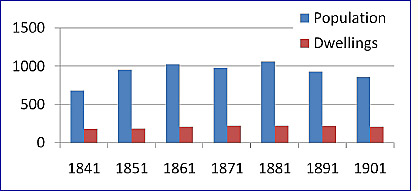 Population and Households
Population and Households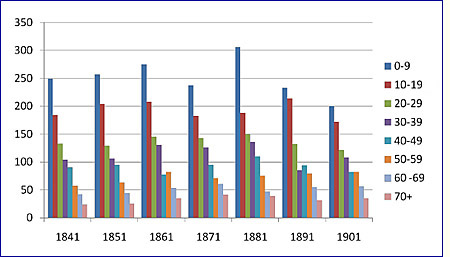 Age Profiles for Blisworth
Age Profiles for Blisworth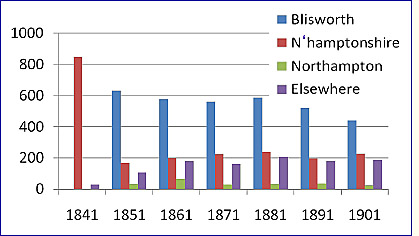 Places of Birth of Blisworth Residents
Places of Birth of Blisworth Residents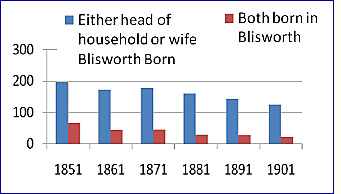 Origins of Married Couples
Origins of Married Couples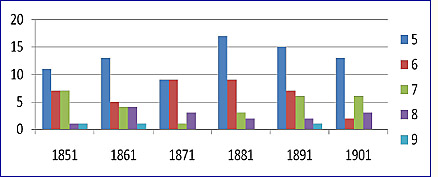 Number of Children
Number of Children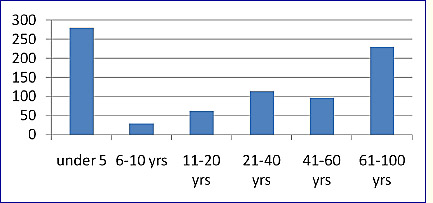 Age at Death
Age at Death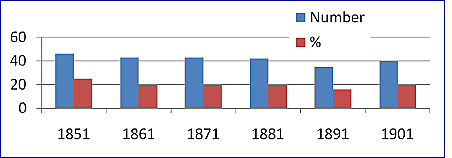 Extended Families
Extended Families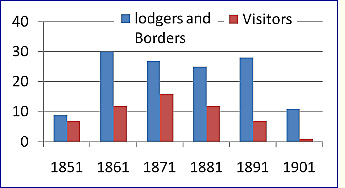 Lodgers, Borders and Visitors
Lodgers, Borders and Visitors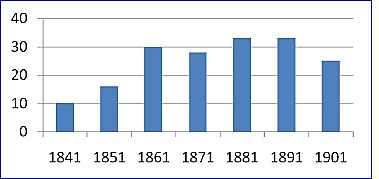 Professionals in Blisworth
Professionals in Blisworth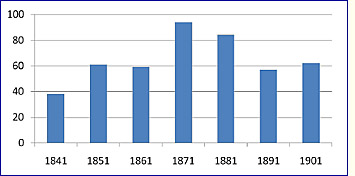 Servants
Servants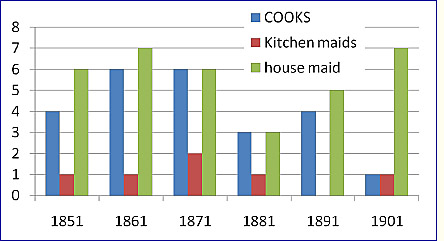 Cooks and Kitchen Maids
Cooks and Kitchen Maids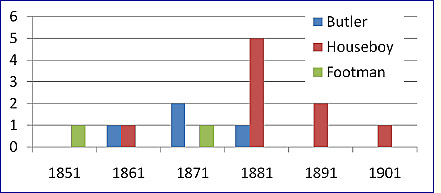 Butlers Houseboys and Footmen
Butlers Houseboys and Footmen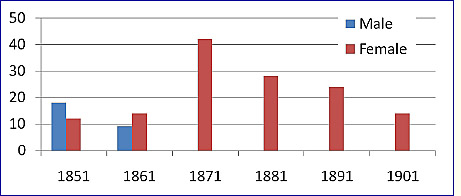 General Servants
General Servants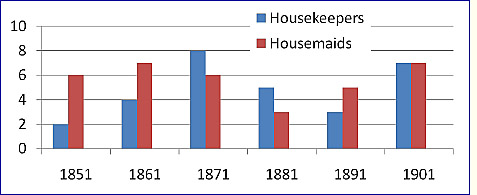 Housekeepers and Housemaids
Housekeepers and Housemaids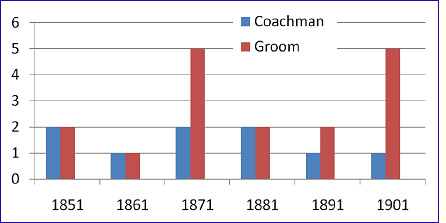 Coachman and Groom
Coachman and Groom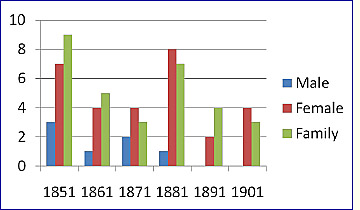 Servants at Blisworth House
Servants at Blisworth House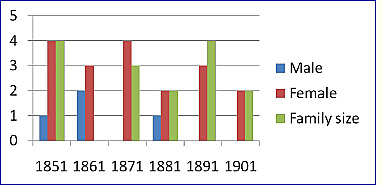 Servants at Blisworth Rectory
Servants at Blisworth Rectory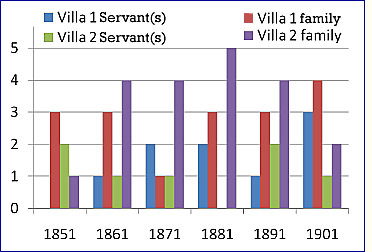 Servants at Grafton Villas
Servants at Grafton Villas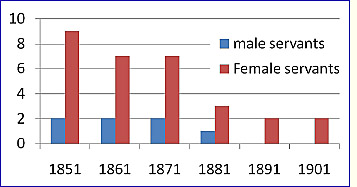 Servants at Blisworth Hotel
Servants at Blisworth Hotel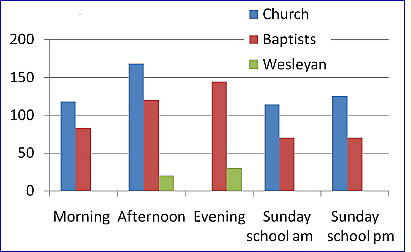 The Religious Census 1851
The Religious Census 1851